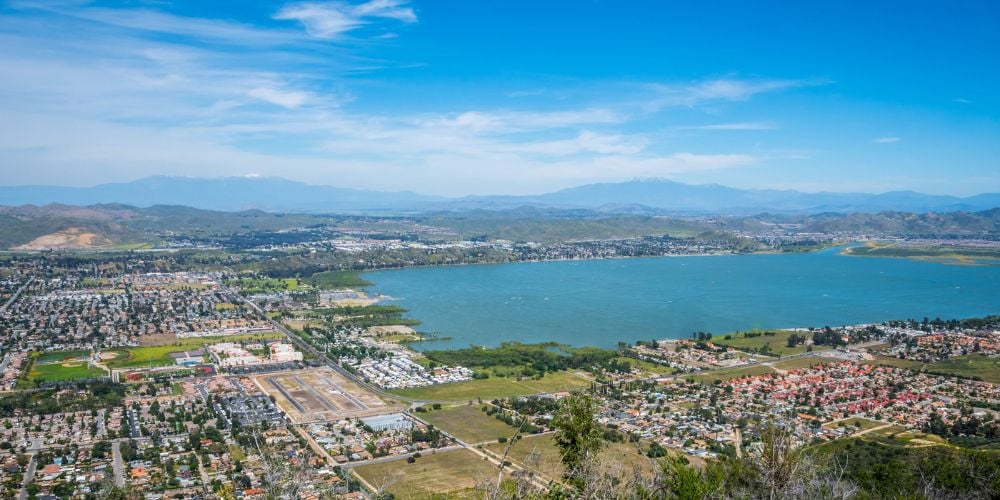Lake Elsinore, Southern California’s largest natural lake, has experienced a significant rise in water levels following a series of atmospheric rivers that have swept across the state.
This surge marks a notable increase in the lake’s water level, reaching heights not seen since 2011, according to the Elsinore Valley Municipal Water District.
Lake Elsinore’s Current Status

At present, Lake Elsinore sits at an elevation of 1248.13 feet, marking a substantial increase attributed to recent heavy rainfall and snowmelt from the surrounding mountains.
A Welcome Relief

This surge in water levels offers a welcome relief to the lake, which has grappled with drought conditions in recent years.
Impact of Atmospheric Rivers

The rise in Lake Elsinore’s water levels can be attributed to a series of atmospheric rivers that have brought heavy precipitation to California in recent weeks.
Atmospheric Rivers

These atmospheric rivers, characterized by concentrated moisture-laden air currents, have replenished the region’s water sources, including lakes and reservoirs.
Lake Elsinore’s Significance

Spanning approximately 3,000 acres, Lake Elsinore serves as a vital natural reservoir at the end of the San Jacinto River Watershed.
Long Shoreline

The lake’s shoreline extends for approximately 14 miles, attracting visitors for recreational activities such as boating and swimming during the summer months.
Impact of Drought Conditions

In recent years, California has faced prolonged drought conditions, resulting in diminished water levels in lakes and reservoirs across the state.
Lake Elsinore, like many other bodies of water in California, has suffered from reduced water inflows due to these drought conditions.
Role of Snowmelt

The lake primarily relies on snowmelt from the surrounding mountains to replenish its water levels.
Increased snowfall in higher elevations during winter contributes to higher water levels in the lake as temperatures rise in the spring, causing snowmelt to flow downstream.
Management of Excess Water

With Lake Elsinore nearing capacity, officials may need to consider diverting excess water into the Santa Ana River to prevent potential flooding in surrounding areas.
This proactive measure aims to manage water levels effectively and mitigate the risk of inundation.
Anticipated Impact on Tourism

The surge in Lake Elsinore’s water levels is anticipated to attract more visitors during the upcoming summer season.
Increased water levels provide enhanced opportunities for recreational activities, potentially leading to a busier lake season compared to previous years.
Historical Context

Last year, California experienced intense winter storms and precipitation, resulting in record snowpack levels in the surrounding mountains.
This influx of snowmelt bolstered reservoir levels across the state, offering a reprieve from previous drought conditions and contributing to improved water resources.
Read More From The Stock Dork



 Tags:
Tags:










